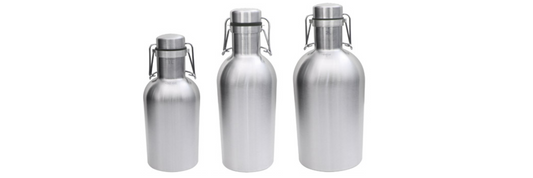Cool frozen water bottles are commonly used every day, especially in the hot summer... But the risks of freezing water bottles are also quite many. Among them, few people pay attention to the risk of water bottles exploding in the freezer.
- Can Plastic Bottles Cause Cancer? Understanding the Risks
- Can You Put Hot Water in Plastic Bottles? Is It Safe?
- Are Plastic Bottles Bad for You?
- Which Number Plastic Bottles Are Safe For Drinking Water
The Freezing Process of Water and Its Pressure
Have you ever wondered what happens when you leave a plastic water bottle in the freezer? Will it explode like a science experiment gone wrong? Let's dive into the freezing process of water and its pressure to understand what really happens.
Water, as we all know, freezes at 0 degrees Celsius (32 degrees Fahrenheit). During the freezing process, the molecules in water slow down and arrange themselves in a crystaline lattice structure. As water freezes, it expands by approximately 9%, which can generate significant pressure inside a sealed container.

The Expansion of Water at Freezing Temperatures
Will plastic water bottles explode in the freezer? Let's explore the expension of water at freezing temperatures.
When water freezes, it expands and takes up more space than it did in its liquid state. This expansion is why ice cubes float in a glass of water. The increased volume of water as it freezes is due to the hydrogen bonding between water molecules. These bonds push the molecules apart, causing the expansion.
If you fill a plastic water bottle completely with water and leave it in the freezer, the expansion of the freezing water can put immense pressure on the bottle. Over time, this pressure may cause the bottle to deform, crack, or worse, explode.
What Are the Risks of Freezing a Sealed Water Bottle?
Freezing a sealed water bottle can pose various risks, from minor inconveniences to potentially dangerous situations. Here are a few risks to consider:
-
Bottle deformation: As mentioned earlier, the expansion of freezing water can cause the plastic bottle to deform. While this may not lead to a complete explosion, it can result in a misshapen bottle that is difficult to handle or open.
-
Bottle leakage: If the pressure inside the frozen bottle becomes too great, the bottle may develop small cracks or leaks. This can not only make a mess in your freezer but also result in the loss of your refreshing beverage.
-
Bottle explosion: In rare cases, the combination of extreme pressure and a weak spot in the plastic bottle can lead to a catastrophic explosion. Sharp plastic fragments can fly across the room, posing a risk of injury.
Factors Affecting Freeze Blast
The likelihood of a frozen water bottle exploding depends on several factors:
-
Bottle material: Plastic bottles are generally more flexible and have a higher chance of survival when compared to glass bottles. Glass is more brittle and prone to shattering under pressure.
-
Bottle thickness: Thicker bottles are more resistant to expansion and tend to handle the pressures of freezing better. Thinner bottles are at a higher risk of cracking or breaking.
-
Freezing duration: The longer a water bottle remains in the freezer, the higher the chances of it experiencing extreme pressure build-up. It is essential to monitor the duration to minimize the risk.
Prevents Risk of Freeze Explosion
To avoid potential freezing risks and messy situations in your freezer, here are a few tips to keep in mind:
-
Do not fill the bottle completely with water: Leaving some empty space at the top of the bottle allows the water to expand without putting excessive pressure on the container.
-
Use plastic bottles instead of glass bottles: Plastic bottles are more flexible and can withstand the expansion caused by freezing better than their glass counterparts.

How to Defrost Frozen Water Bottle Safely
So, you've successfully frozen your water bottle, but now you want to defrost it without any mishaps. Here's how you can do it safely:
-
Move it to the refrigerator: Transfer the frozen water bottle from the freezer to the refrigerator. This slower defrosting process allows the ice to melt gradually, reducing the risk of an abrupt pressure release.
-
Be patient: Give the bottle ample time to defrost naturally. Rushing the defrosting process by using warm water or heating methods can create uneven pressure and increase the risk of bottle deformation or explosion.
Remember, safety should always be your top priority when handling frozen water bottles.
Conclude
In conclusion, freezing a sealed plastic water bottle can be risky. The expansion of water as it freezes creates pressure that can potentially lead to deformation, leakage, or even an explosion. To minimize these risks, avoid filling the bottle completely with water and opt for plastic bottles instead of glass. When defrosting, take it slow and let nature work its magic.
So, the next time you want to chill your water bottle, be mindful of the freezing process and its potential consequences. Stay safe, and enjoy your icy refreshment without any unexpected surprises!
Remember to always prioritize safety when handling frozen water bottles.









